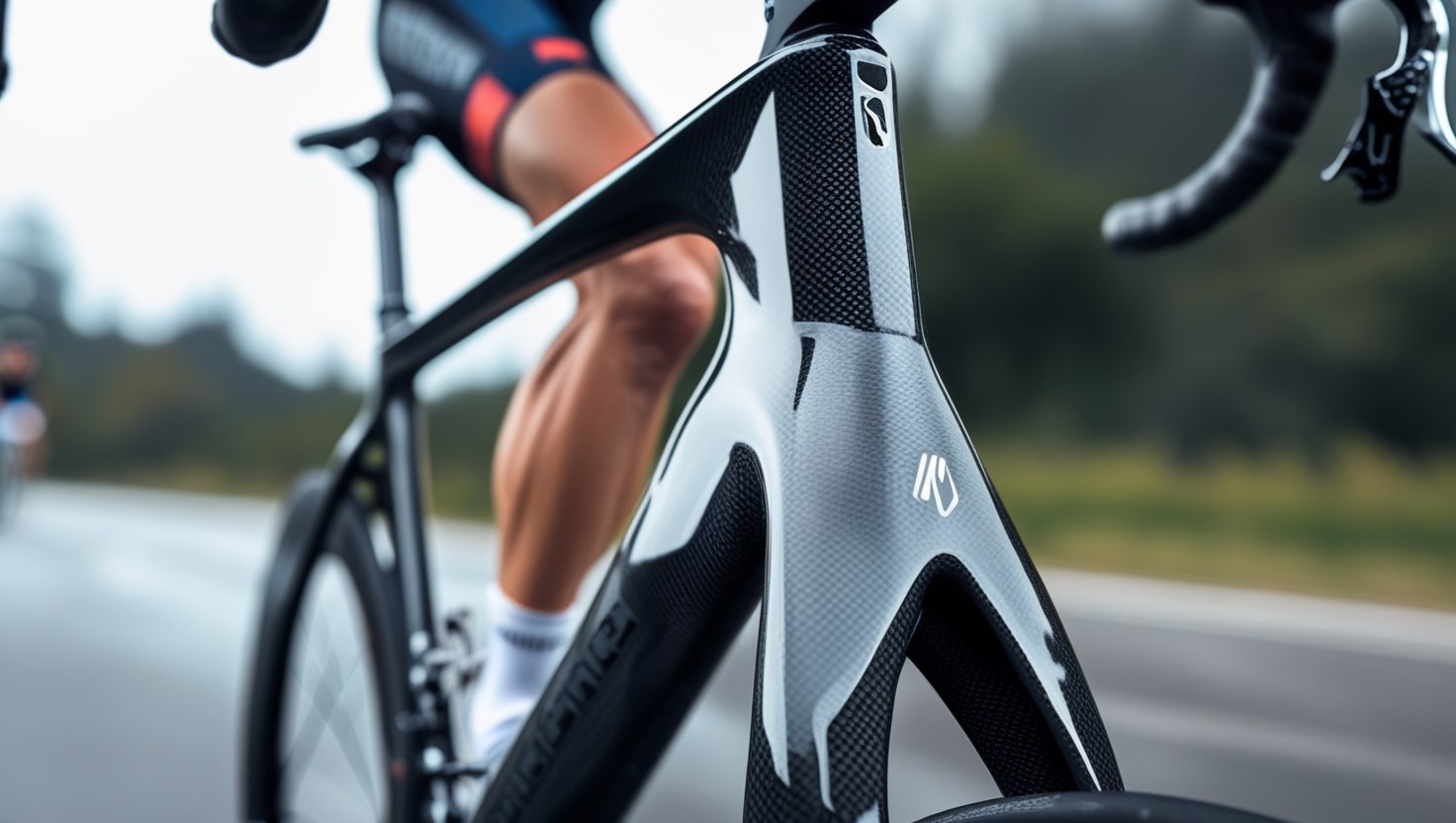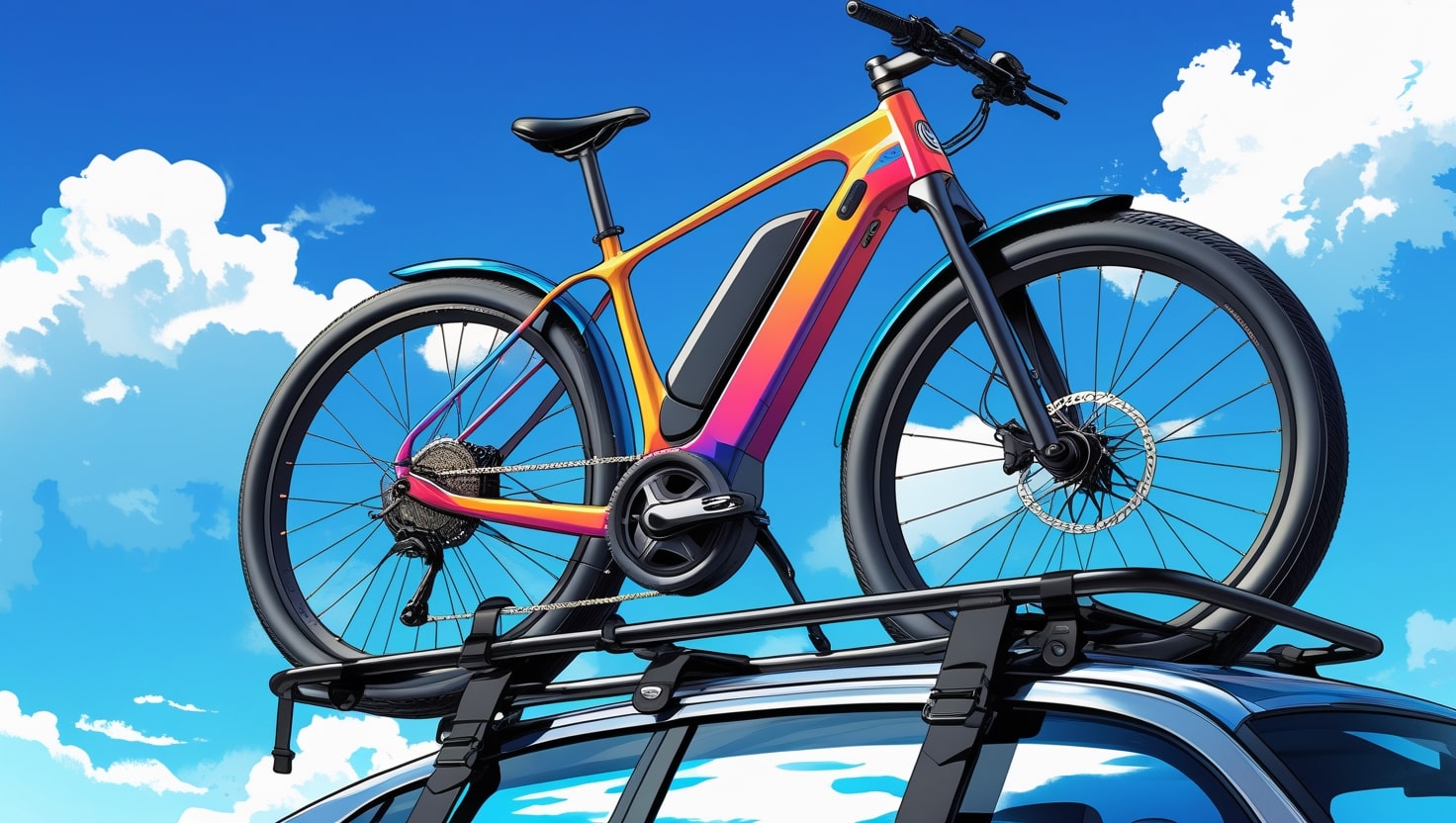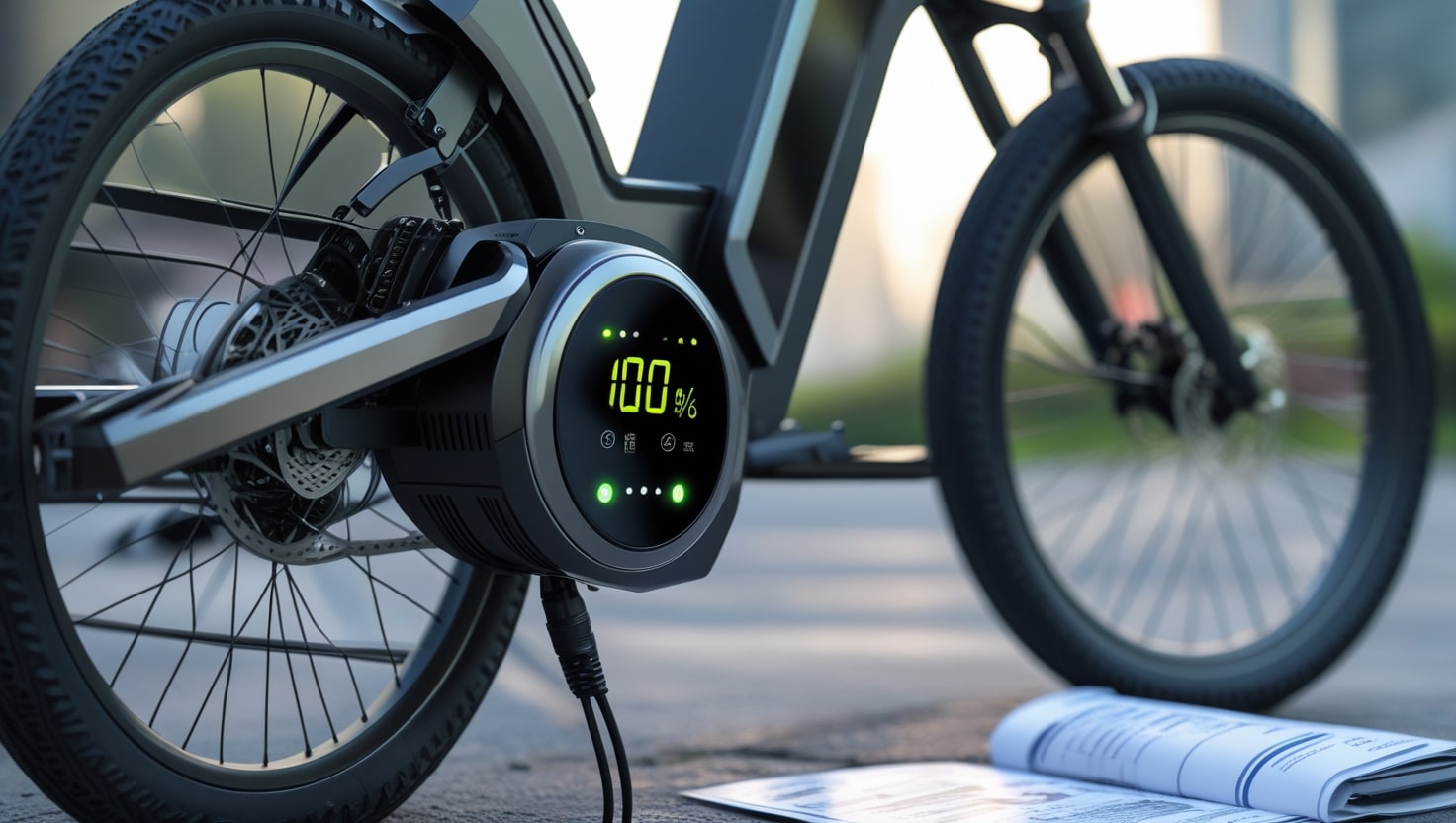When I first started riding a bike, I didn’t pay much attention to the parts beneath my feet. But the crankset—or as some people call it, the chainset—is truly at the heart of every bicycle. It’s the key component that enables you to move, transferring your leg power through the pedal to the chain, and finally, to the wheels, keeping your wheels turning smoothly. At first glance, the bicycle crankset seems simple, yet there’s a surprising wealth of complexity hidden within it, making it an incredibly important part of any ride.
If you’re new to cycling, or even if you’re experienced but looking for upgrades, it’s crucial to have a closer look at different types of cranksets. Understanding aspects like crank length, chainring sizes, and crankset compatibility with your drivetrain can genuinely transform how you experience cycling. From a fast road bike and rugged mountain bike to the versatile gravel bike, delving into these small yet significant components feels like opening Pandora’s Box—there’s so much to discover and enjoy. In this article, we delve into what is crankset?
What is Crankset?
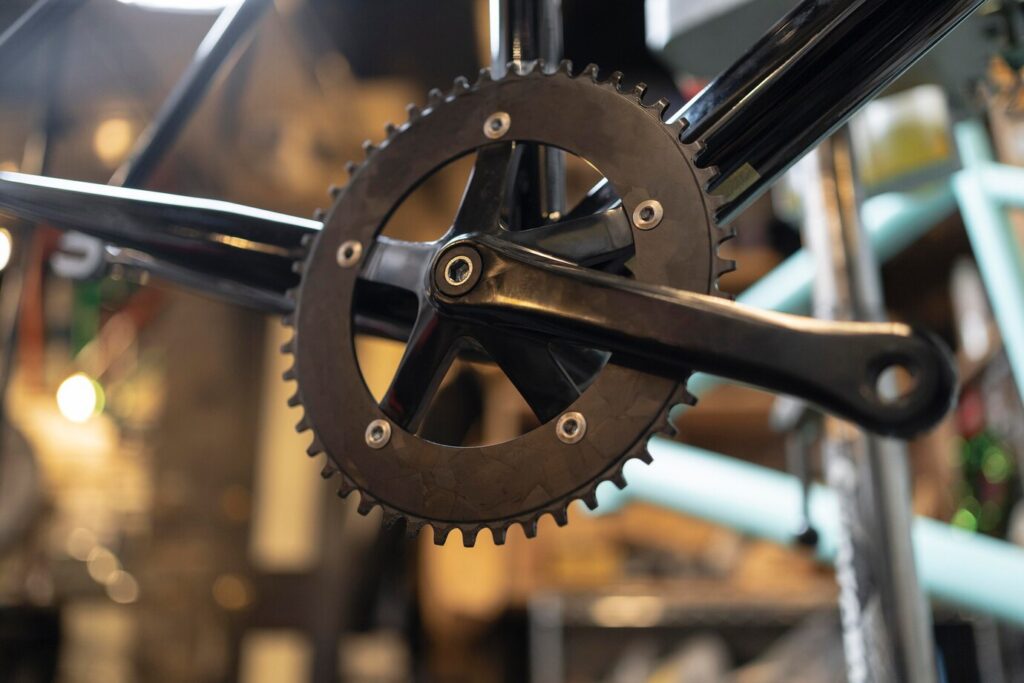
When I first started riding my bike, the crankset—or chainset, as it’s commonly used in the UK—was the part I understood least. But quickly, I learned it’s the essential element that allows you to move your bicycle forward. Typically, a crankset is made up of two crank arms that are attached straight to the pedals. Between these arms sit one or more chainrings, where the chain runs, linking everything together. It’s fascinating how something so seemingly simple can be filled with hidden complexity.
In older crank designs, the axle, also known as the spindle, is usually built into the bottom bracket, which contains bearings that easily attach the cranks to the bike frame. But in modern designs, this bit in the middle is often integrated directly into the crankset itself. Such options and varying standards create numerous compatibility conundrums that can confuse beginners, yet offer exciting possibilities once you understand them better.
One of my early mistakes in cycling was neglecting how crucial proper gearing is. The crankset works in harmony with the rear gearing, which is usually managed by a rear derailleur and a cassette full of sprockets. This setup provides a wide range of gear choices, letting you comfortably select what’s best for the terrain you’re cycling on. Whether you’re pedaling up hills in North America or cruising flat roads elsewhere, mastering the crankset truly unlocks the joy of cycling.
Crankset sizes – 1x, double and triple
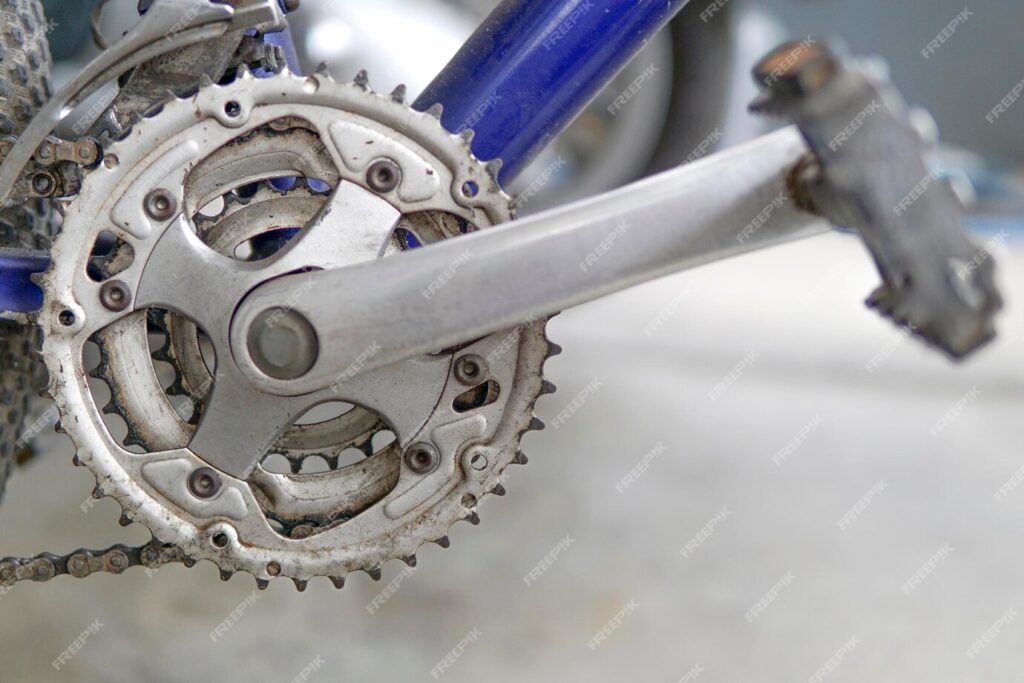
When I first got into cycling, I realized quickly that cranksets can significantly influence how your bike performs, especially when tackling different terrains. The number of chainrings on your crankset—one chainring, two chainrings, or three chainrings—determines the range of gearing options available. Most road bikes I’ve ridden are typically equipped with two chainrings, which is popular among road cyclists for smoother transitions between gears and faster riding on flat roads or gentle hills.
Recently, there’s been a noticeable shift towards simpler, single-ring systems, often called 1x cranksets or 1x drivetrains. These have become especially popular among gravel riders and are also gaining popularity on some road bikes. These setups use a single chainring designed with a special narrow-wide tooth profile, which provides better chain retention, minimizing the risk of dropping your chain during rough rides.
For dedicated mountain bikes, the latest trend overwhelmingly favors single ring configurations. These modern systems pair a single front ring with a large-range rear cassette, giving riders plenty of gearing to climb steep trails without the added complexity of a front derailleur and associated shifter. On some cranksets, especially performance-oriented ones, the chainrings are bolted directly to a part known as a spider, which is attached to the right-hand crank arm. There are some exceptions, though, with certain models featuring integrated designs where the chainring and crank arm protrude as one piece.
If you’re looking to upgrade or replace your existing crankset, it’s important to remember that the choice of chainring sizes and crank types can vary significantly, and changing the setup might mean you’ll also have to swap other components, which can become pricey. For example, adding a power meter—often incorporated into the crankset’s arms, spider, or available as a pedal-based system—is increasingly popular among performance-focused riders.
Swapping chainring sizes
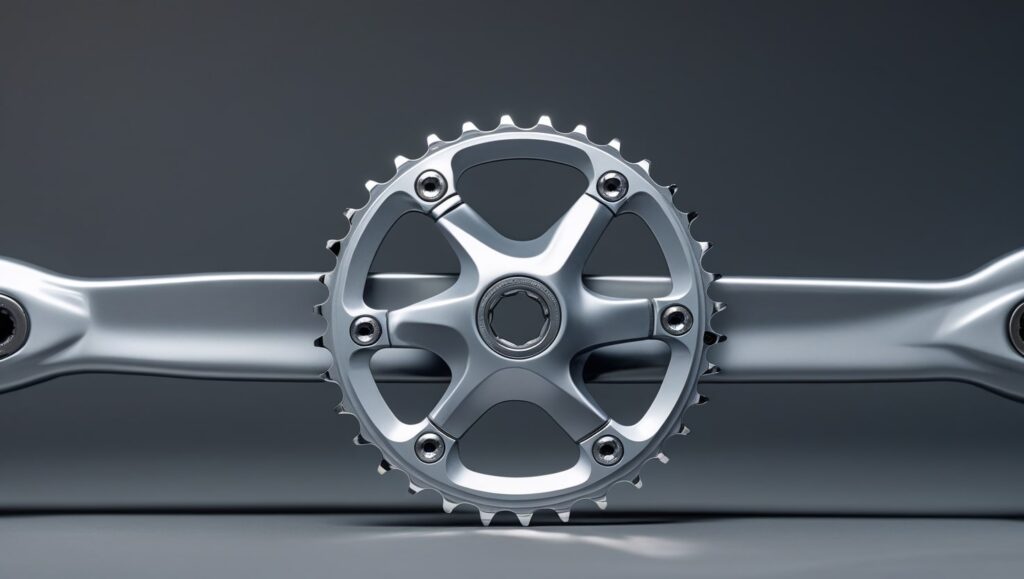
When I first tried to swap chainring sizes on my bike, I thought it would be simple, but quickly learned there’s much more to consider. Each pair of rings on a double or triple crankset is meticulously crafted to complement one another. Their tooth positioning and special ramps ensure the chain can shift smoothly. If you mix a mismatched pair of rings, you’ll face awkward shifts and even an increased risk of the chain falling off entirely.
Also, groupset brands usually have a clear recommendation about the maximum difference in the number of chainring teeth your front derailleur can handle—exceeding this can cause problems during shifting, particularly when making a larger jump between gears.
Another key consideration involves ensuring compatibility between the chainring and your gears. For instance, an 8-speed chainring has wider teeth that won’t properly fit an 11-speed chain, as these modern chains are narrower. Before swapping, always check that the new rings match your current setup.
Personally, I’ve found changes to a single-ring setup much simpler. In such setups, your primary concern is ensuring the correct chain length, making these swaps more straightforward and reliable.
Crank lengths
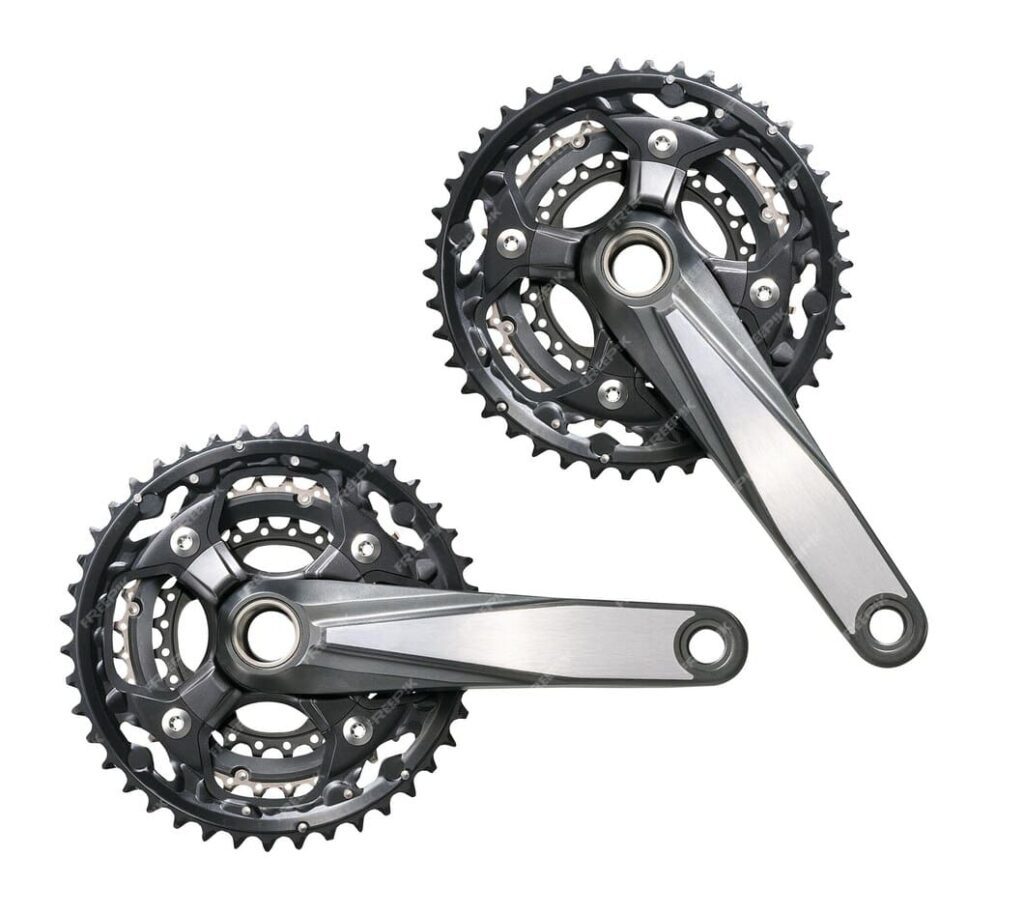
When choosing a crank length, the difference might seem small—just a few millimeters—but it can significantly influence how you ride. Crank lengths usually range from the shortest at 165mm up to 175mm, typically increasing in increments of 2.5mm.
On mid-sized road bikes, the common length tends to be around 172.5mm, while mountain bikes often use either 170mm or 175mm cranks. I’ve personally experimented with different lengths and found that switching to a shorter crank arm helped me maintain a higher cadence, which is why they’re often preferred by triathletes or riders focusing on smoother pedaling.
On the other hand, fitting longer crank arms gives you more leverage, which can be beneficial on climbs or when pushing hard. However, be careful if you’re thinking of switching to longer cranks on larger-sized bikes because it can reduce your ground clearance—particularly noticeable when pedaling through a fast corner or riding off-road over obstacles.
In normal practice, most riders barely notice the increase from one size to another, but it’s worth considering how your specific riding style and preferences align with these small yet impactful variations.
Crankset compatibility
If you’re thinking of changing or replacing your chainrings, you need to understand that not all cranksets are the same. Cranks are designed with different connection systems, such as a direct mount setup or multiple arms that connect the chainring to the crank arm. For example, Shimano’s road cranksets typically have four arms, but they are arranged unevenly and positioned differently around the spindle.
In contrast, SRAM’s 11-speed road bike cranksets typically have five evenly spaced arms, with a chainring bolt at the back of the crank arm to secure the chain.
Other brands like Campagnolo and FSA also offer road bike cranksets with four arms that are distributed evenly, such as the Super Record Wireless model from Campagnolo. From my experience, I’ve learned that while many cranksets look similar, their interfaces and designs are often different, meaning not all chainrings will fit every crankset.
Bolt circle diameter (BCD) explained
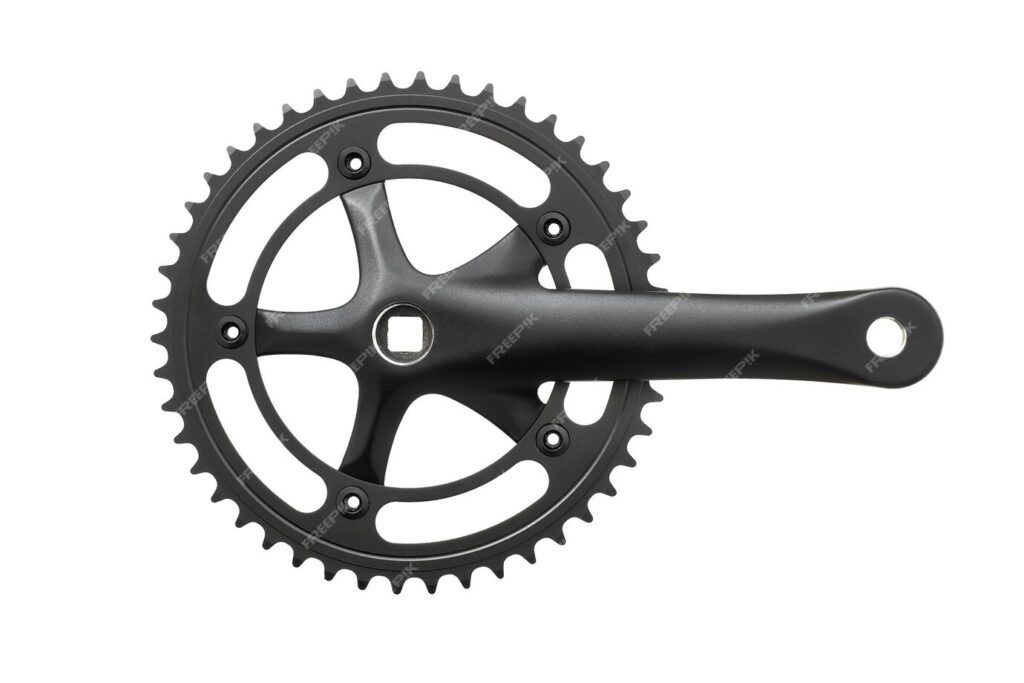
Knowing the bolt circle diameter (BCD) is crucial when modifying the size of your chainring. This is the separation between the circle made by the bolts holding the crank spider or chainring to the spider. You might also hear it called pitch circle diameter, which is how Shimano’s literature describes it. For a replacement chainring to fit your crankset securely, it must precisely match the BCD and bolt placement.
In earlier designs, the size of the chainring affected the BCD measurement. For instance, the 50/34t setup used a lower 110mm BCD, whereas Shimano’s 53/39t road crankset had a 130mm BCD. This difference meant you couldn’t easily change between them without swapping the entire crankset. Thankfully, Shimano road cranksets have settled on 110mm BCD for all modern chainrings, giving riders the option to increase or decrease ring sizes without needing to change cranks.
SRAM, on the other hand, has a few different BCD arrangements depending on the setup. The SRAM Force Wide double crankset is made with a 94mm BCD, but the 12-speed SRAM Force eTap AXS double- and single-ring cranksets have a 107mm BCD. The S-650 Eagle MTB crankset from SRAM comes with 104mm BCD, showing how BCD varies between setups. SRAM Force cranksets with an 11-speed switch can feature a 110mm or 130mm BCD, depending on the chainring compatibility specifications.
Some arrangements with a secondary BCD are much more complex. For instance, the Shimano GRX gravel groupset has an inner ring with a lower 80mm BCD and an outer chainring with a 110mm BCD. Installation becomes significantly more challenging when the inner chainrings are installed independently inside the outer ring. I once faced this issue on an SRAM Rival eTap AXS bike, where the compatible chainring options were dependent on the exact BCD and chainring bolt placement.
If you are unsure about your BCD, I recommend using a helpful guide to measure the midline of the bolts on your crank. This ensures that any replacement you choose matches perfectly with your cranksets. Missing this step can lead to compatibility issues, especially when trying to increase or decrease your lower teeth limit, like switching between 38t, 39t, 33t, or other sizes.
Direct-mount cranksets
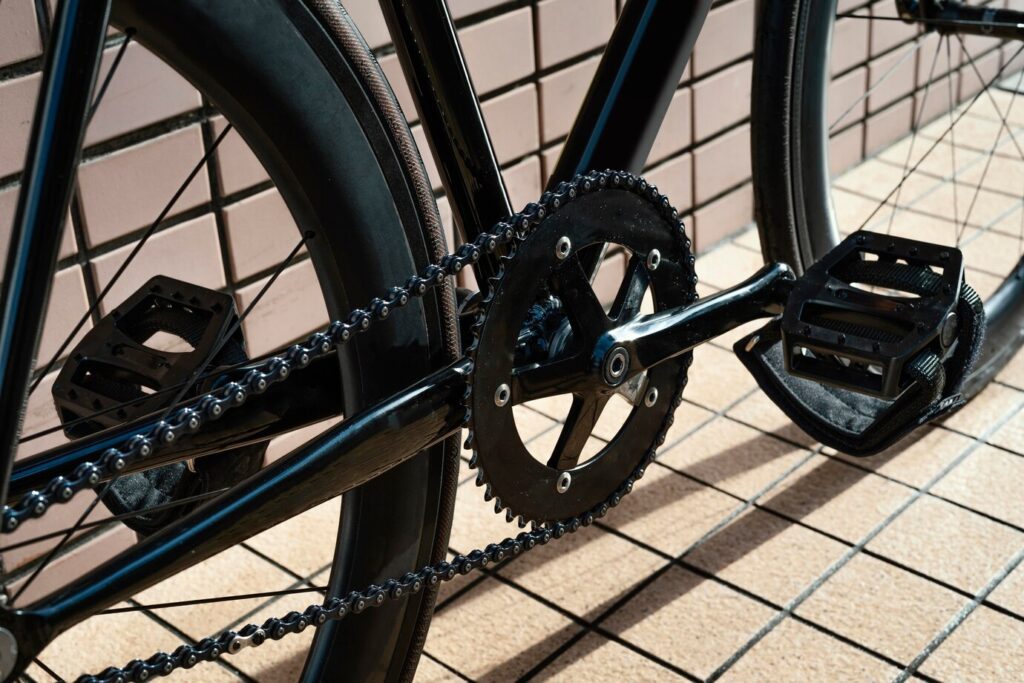
Recently, I switched one of my mountain bikes to a direct-mount crankset, and I immediately noticed the weight saving. In these systems, the outer chainring fixes straight to the crankset spindle, eliminating the bolts in the arms. This configuration is typical of single-ring gravel and mountain bikes.
However, one thing to keep in mind is the limited compatibility between different brands. The Force AXS and Red eTap AXS cranksets from SRAM, for instance, have direct mount configurations and both chainrings are CNC machined from a single block of aluminum. SRAM claims that by making the chainring stiffer, this design enhances shifting performance and chain control.
However, there is a trade-off. If one chainring wears out, you need to change the entire set since it’s built as one piece. Cannondale’s SpiderRings offer a similar design, but the chainrings are forged instead of machined. While these designs might seem high-end, they’re growing in popularity with the increasing number of direct-mount cranksets on the market.
Bottom bracket standards

When it comes to cranksets, one of the most complex parts is understanding bottom bracket standards. These guidelines outline the crank spindle’s diameter, how the bearings inside the bottom bracket shell are spaced, and how they are fastened to the bike frame.
There are certain exceptions to the general rule that a road crankset is incompatible with a mountain bike groupset and vice versa. I’ve learned through experience that while some systems are inter-compatible, most aren’t, and you may need adaptors or a professional at a bike workshop to help you match the right combinations.
Another thing to consider is the width of the bottom bracket shell, which directly affects your Q-factor—the distance between your pedals. This factor plays a big role in pedaling efficiency. Mountain bikes are designed with a wider stance to allow for greater tire clearance, whereas road bikes usually have a modest Q-factor. The rise of gravel bikes and the trend towards wider tires on road bikes are now muddying the waters, making it even more complex for everyday riders to choose the right setup.
If you’re planning to swap your crankset, my best advice is to stick to the standard already used on your bike. If you’re unsure, seek advice from a professional who understands these groupsets well. Getting this part wrong can cost you more time and money later.
Crankset types – road vs MTB vs gravel
Depending on the kind of riding they are designed for, crankset designs differ. This is a summary of common cranksets for gravel, mountain bikes, and roads.
Road bike cranksets

The two-ring dual crankset, which was one of three popular varieties until recently, is used by the majority of road bikes.
'Standard' double crankset
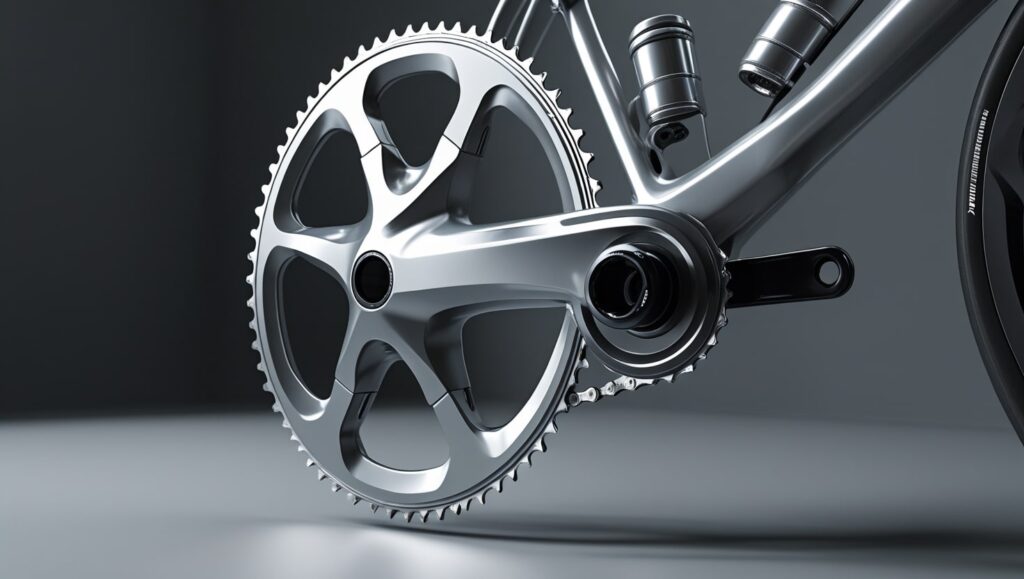
When I started cycling years ago, the standard double crankset with 53/39t rings was very popular among racers. This common configuration was known for its high gearing, making it perfect for powerful riders on flat roads. But these days, the fashion has shifted toward smaller chainrings that provide lower gear ratios, making climbing and endurance riding easier.
With the move to 12-speed gearing, the latest WorldTour bikes featuring SRAM or Shimano groupsets have left this standard behind. Shimano now offers a 54/40t option in its Shimano Dura-Ace Di2 R9200 groupset, slightly bigger than the traditional 53/39t, but still aimed at competitive road cyclists.
SRAM, on the other hand, took a different way. Its road bike groupsets focus on using a 10-tooth small cog in the 12-speed cassettes, while Shimano groupsets use an 11-tooth. This small change provides a wider spread and overall range, letting SRAM use smaller chainrings while maintaining equivalent gearing. For example, the largest double crankset you’ll find on SRAM’s Red eTap AXS is 50/37t, which gives the same performance with fewer teeth.
'Semi-compact' double crankset
For most sporty road bikes, the semi-compact crankset, typically called a 52/36t, has become the go-to choice instead of the old 53/39 setup seen on pro-level bikes. This slightly lower gearing setup opens up more low-range options for tackling hills, while still giving you good top-end gears for speed. SRAM offers a 12-speed equivalent with a 48/35t crankset, providing a balance between climbing power and flat-road speed that feels perfect for everyday road bikes, whether you’re chasing personal records or just enjoying the ride.
'Compact' double crankset
The compact crankset is typically found on endurance road bikes, all-rounders, and entry-level bikes because it uses 50-tooth and 34-tooth chainrings that give plenty of low-end gearing. This setup is perfect for riders who need help climbing hills without exhausting their legs.
When paired with a modern cassette that includes a sprocket with 30 teeth or more, you get a very lower climbing gear. SRAM also offers a 12-speed equivalent combination of 46/33t, which keeps the setup light and easy to spin. While your highest or hardest gear may feel a bit smaller, this setup helps many riders enjoy longer rides more comfortably.
1x cranksets
Although 1x cranksets and 1x drivetrains have not completely taken over road cycling, they are becoming popular among riders in the peloton. In fact, Primož Roglič used SRAM’s Red AXS XPLR gravel groupset in the high mountains of the 2023 Giro D’Italia, showing how far this setup has come. Because of the better chainline, 1x groupsets are typically lighter than 2x cranksets and are thought to be more efficient. Time trial bikes have used this setup for years, taking advantage of these perceived benefits to reduce weight and improve performance on flatter courses.
Triple cranksets
Triple rings are rare because modern double cranksets provide a greater range of gearing, yet certain touring cycles do have them.
Gravel bike cranksets – 1x or 2x?
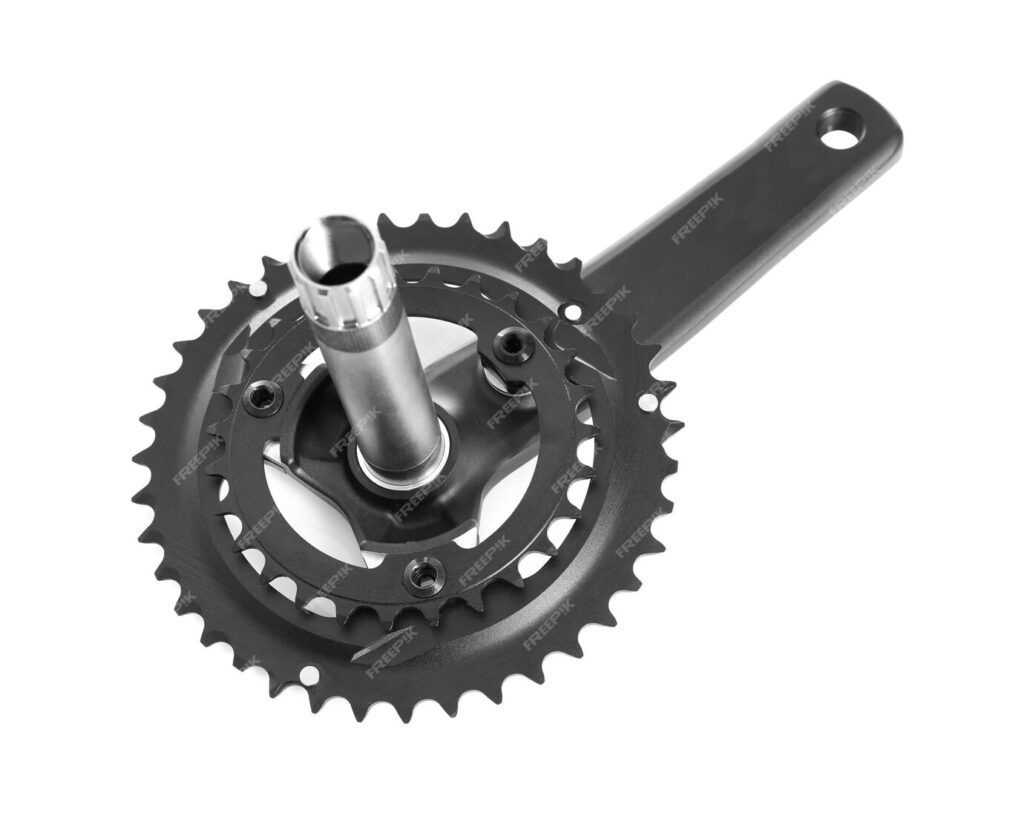
Gravel bikes come with many different crankset configurations, and the choice between 1x and 2x setups depends on your gearing needs. Early first-generation gravel bikes often used a compact road crankset with 50/34t chainrings, which is still available on some all-road bikes. However, these setups don’t always offer lower ratios needed for off-road riding or bikepacking. That’s why many riders now prefer super-compact cranksets, also known as sub-compact cranksets, with 46/32t or 46/30t chainrings. Shimano GRX, for example, also offers a 48/31t option to give harder climbs simpler gearing when paired with the right cassette for below 1:1 ratios.
On the other hand, 1x cranksets are a popular option because they remove the front derailleur, creating a simpler mechanical setup. With SRAM XPLR, Shimano GRX, and Campagnolo Ekar all providing gravel-specific gearing, you can choose single chainrings in sizes like 36t, 38t, 40t, or 42t, which are commonly available. Campagnolo Ekar even pushes the limit with 13 speeds and a smaller sprocket with nine teeth, designed as a single-ring only setup with four crankset options ranging between 38 and 44 teeth.
While 2x gives you more options and smaller steps between gears, 1x systems accept bigger jumps but are easier to maintain, especially for off-road conditions. Personally, I’ve tried both and found 1x to be ideal when I wanted fewer distractions on rough terrain, but 2x worked better when I needed a wider range for mixed surfaces. Both SRAM, Shimano, and Campagnolo continue to offer flexible setups to suit every style of gravel riding.
Mountain bike cranksets
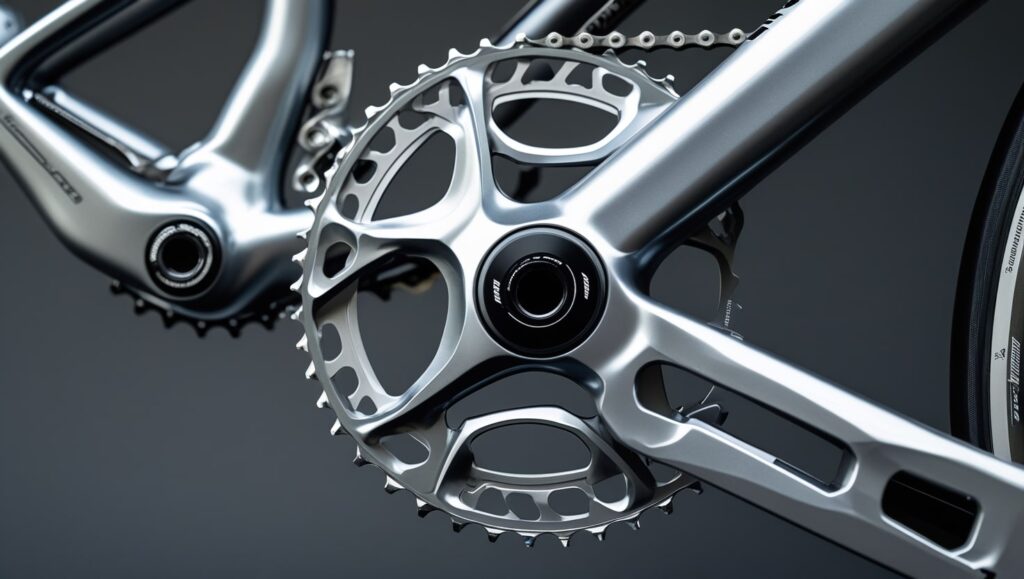
When it comes to mountain bike setups, there are many options to choose from, including single-ring cranksets, two-ring, and even triple chainsets like the 42/32/22t on budget models such as the S-200 with 9-speed gearing. Most brands today cut down on front-end complexity by using single rings paired with a wide-ranging cassette. This trend is especially strong with SRAM, an American company known for its Eagle moniker, which represents their 12-speed, single-ring only drivetrain options like SX Eagle and the flagship XX T-Type Eagle Transmission.
SRAM also majors in offering various crankset sizes like 30, 32, 34, 36, and 38-tooth chainrings, with their top-end XX T-Type Eagle crankset offering 36/22t or 38/24t two-ring setups through models like GX-1000. Shimano, on the other hand, provides a 1×12 drivetrain with Shimano groupsets such as Deore, SLX, XT, and top-of-the-range XTR. However, this range is expected to expand with the introduction of Shimano Cues, bringing even more choices across the ranges.
While most cheaper bikes stick to subset options like 30, 32, or 34-teeth, high-performance riders might choose between single-ring or two-ring setups based on terrain. If your bike has different axle-width standards, you’ll also need to pay attention to chainline. The centreline of the bike and the axis of the drivetrain need to be aligned smoothly, or you might face shifting issues. Some brands offer different chainline adjustments to accommodate these different standards.
From my personal experience, understanding your bike’s drivetrain and crankset compatibility is essential. Whether you’re upgrading to a 12-speed Eagle or sticking with an 11-speed Shimano GX-1000, knowing the range, subset, and correct chainline will help you get the best performance on the trail.
Cyclocross cranksets

If you’ve ever watched a cyclocross race, you’ll notice that single chainrings have become very popular, and for good reason. In the muddy conditions typical of cyclocross, riders prefer a setup with less to go wrong. Many cyclocross bikes fit a chain guide to lower the risk of a dropped chain, keeping the ride smooth.
Even though single chainrings are more popular these days, the traditional 46/36t two-ring groupset is still available because of the smaller leap between chainrings, which provides secure shifting. This setup gives riders more ratios to handle varied terrain, making it a solid choice for gravel as well.
Electric bike cranksets
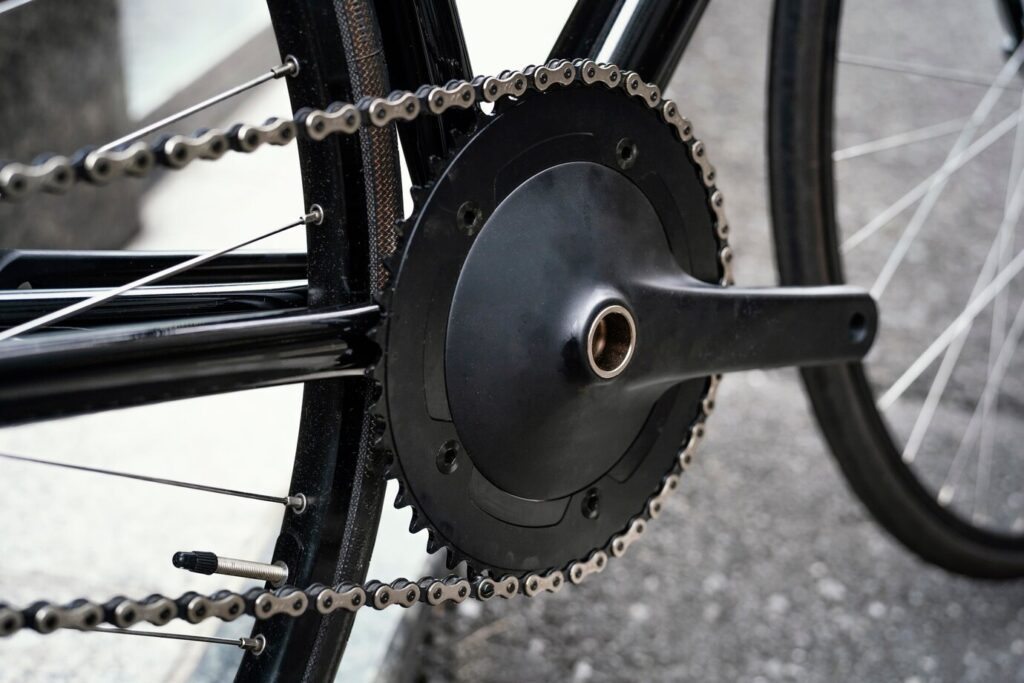
If you ride an electric bike, you’ll notice that electric bike motors come with different mounts depending on the motor brand. Mid-mounted motors, like those from Bosch, Shimano, Yamaha, and Specialized, often have the cranks and chainring mounted separately from the motor’s spindle, making mounting standards differ across ranges.
Thankfully, most setups have aftermarket crank alternatives, and some brands still support the traditional ISIS bottom bracket mount for seamless compatibility. I’ve worked on several e-bikes and found that using the right crankset is key to making sure everything fits perfectly with the variety of systems on the market.
Hybrids and fixies

Many flat-bar hybrid bikes come with a variety of crankset configurations, offering both 1x and 2x options, which are common for city and casual riders. Singlespeed bikes, including fixies and track bikes, stick to a single chainring with no freewheel, meaning if the rear wheel is moving, so are your legs.
The key with these drivetrains is finding the right combination of chainring size and sprocket to match your riding style and the terrain. Whether you’re riding fixed gears or looking for the ideal gear ratio, you can expect a simple but effective setup on these bikes.
Crankset alternatives
Elliptical rings
While round chainrings are standard on most bikes, some riders buy elliptical rings to improve pedalling. Years ago, they were used in the pro ranks by riders like Bradley Wiggins and Chris Froome, among others, though they’re not so popular now.
By altering the effective gear ratio as the crank spins, elliptical rings are intended to smooth out your pedal stroke and make it easier to push through the dead areas at the top and bottom of your pedal stroke. If you want to try them, it’s important to ensure they are compatible with your crank arms for the best performance.
Belt drives
Not all bikes use a standard toothed crankset—one of the most popular alternatives is the belt drive, often found on city bikes. This system uses a carbon fibre toothed belt to turn the rear wheel, offering the advantage of lower maintenance and lubricant-free operation, making it perfect for everyday riders who don’t want to deal with oily chains. Gates is the most common brand providing these systems, and in my experience, they are smooth, quiet, and reliable for urban drive setups.
Classified hubs
Another exciting crankset alternative is the Classified Powershift hub, a two-speed internal gear hub housed in the rear hub. This system enables you to run a 1x groupset while still getting the same range as a 2x crankset. It’s claimed to offer the largest gear range on the market, making it a great choice for road, gravel, and mountain bikes. Because the gear hub is compatible with different bike types, it’s quickly gaining attention as one of the most innovative drivetrain solutions available today.
Buying a new crankset or parts
While it might seem simple, there are actually far more different things to consider when you want to replace your cranksets or parts. In general, I always suggest sticking to the brand and model that’s already on your bike to avoid compatibility issues.




